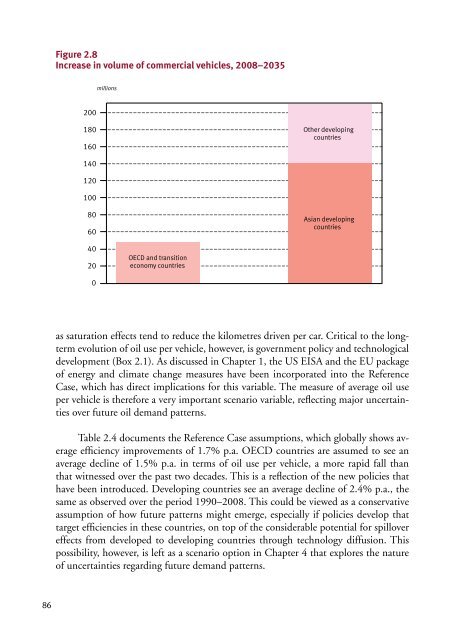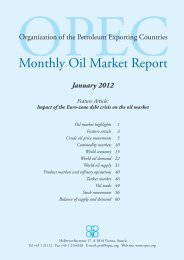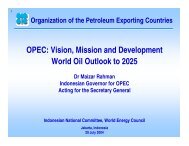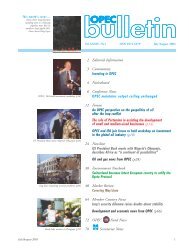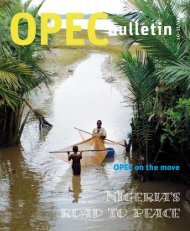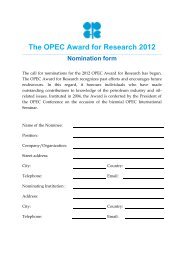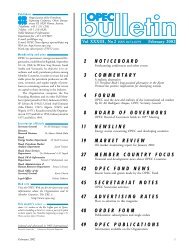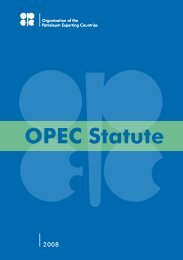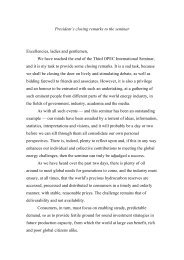Section One
Section One
Section One
Create successful ePaper yourself
Turn your PDF publications into a flip-book with our unique Google optimized e-Paper software.
ion (millions)<br />
7,000<br />
6,000<br />
5,000<br />
4,000<br />
3,000<br />
2,000<br />
1,000<br />
0<br />
86<br />
Figure 2.8<br />
Increase in volume of commercial vehicles, 2008–2035<br />
200<br />
180<br />
160<br />
140<br />
120<br />
100<br />
80<br />
60<br />
40<br />
20<br />
0<br />
millions<br />
OECD and transition<br />
economy countries<br />
Figure 2.8<br />
Other developing<br />
countries<br />
Asian developing<br />
countries<br />
as saturation effects tend to reduce the kilometres driven per car. Critical to the longterm<br />
evolution of oil use per vehicle, however, is government policy and technological<br />
development (Box 2.1). As discussed in Chapter 1, the US EISA and the EU package<br />
of energy and climate change measures have been incorporated into the Reference<br />
Case, which has direct implications for this variable. The measure of average oil use<br />
per vehicle is therefore a very important scenario variable, reflecting major uncertainties<br />
over future oil demand patterns.<br />
Table 2.4 documents the Reference Case assumptions, which globally shows average<br />
efficiency improvements of 1.7% p.a. OECD countries are assumed to see an<br />
average decline of 1.5% p.a. in terms of oil use per vehicle, a more rapid fall than<br />
that witnessed over the past two decades. This is a reflection of the new policies that<br />
have been introduced. Developing countries see an average decline of 2.4% p.a., the<br />
same as observed over the period 1990–2008. This could be viewed as a conservative<br />
assumption of how future patterns might emerge, especially if policies develop that<br />
target efficiencies in these countries, on top of the considerable potential for spillover<br />
effects from developed to developing countries through technology diffusion. This<br />
possibility, however, is left as a scenario option in Chapter 4 that explores the nature<br />
of uncertainties regarding future demand patterns.


